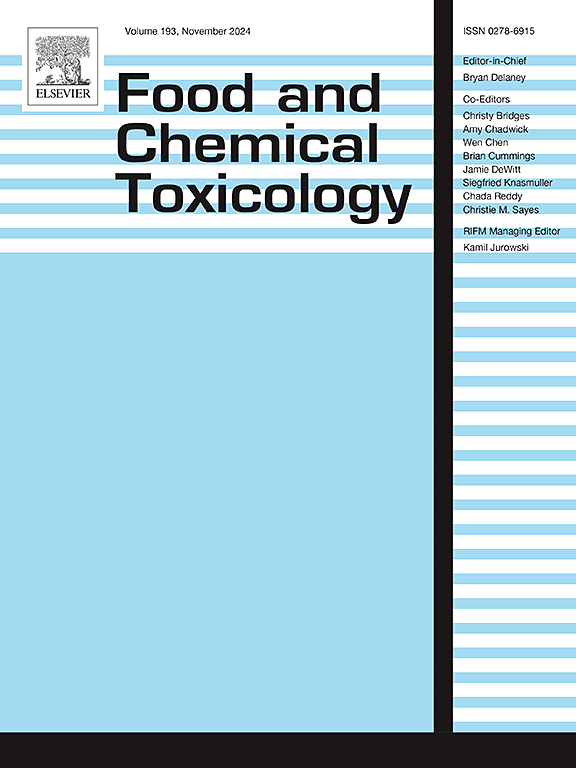Acute ivermectin toxicity on skin and brain tissue of adult albino rats: Evaluation of the role of Flumazenil and Vitamin C as new treatment modalities
IF 3.9
3区 医学
Q2 FOOD SCIENCE & TECHNOLOGY
引用次数: 0
Abstract
Ivermectin, a natural antiviral drug, has been recommended for treating various diseases, including Coronavirus Disease 2019. This study aimed to evaluate the potential histopathological and biochemical changes in the skin and brain of adult albino rats treated with ivermectin, as well as the effectiveness of Vitamin C and flumazenil in their treatment. Thirty rats were divided into five treatment groups, each containing six rats. After a week of acclimatization, different doses of ivermectin, Vitamin C, and flumazenil were administered to the rats. The rats were then euthanized. Histological and micro ribonucleic acid (miRNA) analysis of the skin and brain tissues, immunohistochemistry, and plasma collection from tail vein puncture were conducted to measure dopamine and interleukin 5 levels. The control group showed minimal acute toxicity, with an increase in hsa-miR535a-5p, dopamine, interleukin 5 (IL-5), and p-glycoprotein levels. In conclusion, the acute toxic effects of ivermectin in rats led to significant histological and morphological changes in both brain and skin tissues, along with oxidative stress and disruptions in P-glycoprotein, inflammatory cytokines, and the inflammatory response. Flumazenil and vitamin C may help normalize neuronal signaling, alleviate oxidative stress, and enhance dopamine release.

求助全文
约1分钟内获得全文
求助全文
来源期刊

Food and Chemical Toxicology
工程技术-毒理学
CiteScore
10.90
自引率
4.70%
发文量
651
审稿时长
31 days
期刊介绍:
Food and Chemical Toxicology (FCT), an internationally renowned journal, that publishes original research articles and reviews on toxic effects, in animals and humans, of natural or synthetic chemicals occurring in the human environment with particular emphasis on food, drugs, and chemicals, including agricultural and industrial safety, and consumer product safety. Areas such as safety evaluation of novel foods and ingredients, biotechnologically-derived products, and nanomaterials are included in the scope of the journal. FCT also encourages submission of papers on inter-relationships between nutrition and toxicology and on in vitro techniques, particularly those fostering the 3 Rs.
The principal aim of the journal is to publish high impact, scholarly work and to serve as a multidisciplinary forum for research in toxicology. Papers submitted will be judged on the basis of scientific originality and contribution to the field, quality and subject matter. Studies should address at least one of the following:
-Adverse physiological/biochemical, or pathological changes induced by specific defined substances
-New techniques for assessing potential toxicity, including molecular biology
-Mechanisms underlying toxic phenomena
-Toxicological examinations of specific chemicals or consumer products, both those showing adverse effects and those demonstrating safety, that meet current standards of scientific acceptability.
Authors must clearly and briefly identify what novel toxic effect (s) or toxic mechanism (s) of the chemical are being reported and what their significance is in the abstract. Furthermore, sufficient doses should be included in order to provide information on NOAEL/LOAEL values.
 求助内容:
求助内容: 应助结果提醒方式:
应助结果提醒方式:


